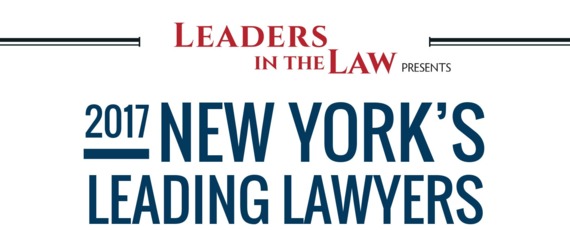In New York, wrongful death claims are governed by the Estates, Powers, and Trusts Law (EPTL) § 5-4.1. This law allows certain individuals to file a lawsuit when someone dies due to the negligence or wrongful act of another party. The primary goal of such claims is to seek compensation for the financial and emotional impacts of the loss.
It is important to note that the statute of limitations for filing a wrongful death claim in New York is generally two years from the date of death. This means the claim must be filed within this period to be considered valid. If the claim is not initiated within this timeframe, it may be barred by law, leaving survivors without legal recourse. Although uncommon, there are certain situations where you might be granted an extension for filing a wrongful death claim.
Grasping these laws and collaborating with a skilled New York wrongful death lawyer can help you effectively manage the complexities of wrongful death claims and settlements.
What Is the Average Settlement for Wrongful Death?
It is hard to pin down an exact average for wrongful death settlements, as each case is unique. Settlements can range widely, from hundreds of thousands to millions of dollars, depending on various factors like the severity of the negligence and the specific damages involved.
To get a clearer idea of what your wrongful death case might be worth, speak with an experienced attorney who can evaluate the specific details of your situation and provide a more accurate estimate.
Possible Factors That Can Influence Settlement Amounts
The amount of a wrongful death settlement in New York can vary significantly based on a range of factors. These factors determine the financial compensation that the surviving family members may receive, and they are often complex and require careful evaluation. Below are the key elements that can influence the settlement amount you can receive in a wrongful death claim.
Economic Damages
Economic damages are one of the primary components of a wrongful death settlement and are typically easier to quantify. These damages represent the financial losses directly resulting from the deceased’s death. They include:
- Lost Income: This compensation covers the earnings and financial support your loved one would have provided to your family over time, considering factors such as their age, occupation, and expected career trajectory.
- Medical Expenses: Coverage for the medical bills and care costs that accrued before your loved one’s passing.
- Funeral and Burial Costs: The settlement also often includes reimbursement for the expenses associated with funeral and burial arrangements.
Non-Economic Damages
Non-economic damages are more challenging to quantify than economic damages because they involve intangible losses. However, they are no less critical in determining the settlement amount. Non-economic damages can include things like the physical and emotional suffering experienced by the deceased before succumbing to their injuries.
Punitive Damages
Punitive damages are not always available in wrongful death cases, but they can significantly increase the settlement amount when applicable. In New York, punitive damages are awarded only in cases where the defendant’s actions were particularly reckless, intentional, or egregious.
For example, if the death resulted from gross negligence, such as a drunk driving accident or deliberate misconduct by a company, punitive damages might be pursued. These damages are awarded at the court’s discretion and can substantially raise the settlement amount.
Insurance Companies
Insurance companies often have a considerable influence on the final settlement amount. The defendant’s insurance policy limits can set the ceiling for the compensation available in many cases. If the liable party has limited insurance coverage, the settlement amount might be constrained by these limits, unless other assets can be pursued.
Negotiating with insurance companies can be challenging, as they often seek to minimize payouts. An experienced attorney can push for a fair settlement by leveraging their knowledge of the law, past case precedents, and the full extent of the family’s losses.
The Quality of Your Evidence
Additionally, the strength and quality of the evidence presented is crucial in determining the settlement amount. Well-documented evidence, including medical records, witness testimonies, and expert opinions, can substantiate the claim and support a higher settlement.
With Friedman, Levy, Goldfarb, Green & Bagley, P.C. on your side, you can trust that every aspect of your case will be thoroughly evaluated, ensuring that all relevant factors are considered to maximize your potential settlement.
How Are Wrongful Death Settlements Paid Out?
Wrongful death settlements can be paid out in a lump sum or structured payments over time, depending on the agreement reached between the parties involved. A lump sum payment provides the entire settlement amount at once, offering immediate financial relief. Structured settlements, on the other hand, distribute payments over a set period, which can be beneficial for managing long-term financial needs.
The method of payout may also depend on the specific terms negotiated during the settlement process or any stipulations set by the court.
Are Wrongful Death Settlements Taxable?
Wrongful death settlements are generally not considered taxable income under federal law, meaning recipients do not have to pay taxes on the money they receive. That said, there can be exceptions in specific cases, such as when punitive damages or interest on the settlement are involved.
How to Divide a Wrongful Death Settlement
In New York, the distribution of a wrongful death settlement follows a specific order of priority as set forth by state law. This ensures that the compensation is allocated to those who were most directly impacted by the loss.
The hierarchy of beneficiaries is as follows:
- Spouse and Children: If the deceased leaves behind a spouse and children, the settlement is typically divided among them, with the spouse generally receiving the larger share.
- Parents: If there is no spouse or children, the parents of the deceased may be the next in line to receive compensation.
- Siblings or Extended Family: In cases where the deceased has no spouse, children, or parents, siblings or more distant relatives may be entitled to a share of the settlement.
How a Law Firm Can Help
Dealing with a wrongful death claim can be incredibly challenging, especially while you are still grieving the sudden loss of a loved one. Enlisting an experienced attorney can provide vital support to both the personal representative and surviving family members during this difficult time.
A New York personal injury lawyer at our firm can handle your claim from start to finish. We begin with a thorough investigation into the circumstances surrounding your case, gathering all necessary documents and evidence, identifying all liable parties, and negotiating assertively with insurers on your behalf.
Should your case proceed to litigation we will prepare a comprehensive case strategy, present compelling arguments, and ensure that the rights of the deceased’s estate and beneficiaries are upheld throughout the legal process.
Our mission is to ensure you receive the full compensation you are entitled to. While we handle the legal aspects, you can focus on supporting your family and taking the time you need to heal.
Contact Us for a Free Consultation
If you have lost a loved one due to someone else’s negligent actions or willful disregard, we can help hold the responsible party accountable and recoup compensation for your suffering and losses.
At Friedman, Levy, Goldfarb, Green & Bagley, P.C., we offer a free initial consultation, and you won’t pay any fees unless we recover compensation for you. We serve clients throughout New York City, including Manhattan, The Bronx, Brooklyn, Queens, Staten Island, Long Island, Westchester County, Rockland County, and Hudson Valley.






